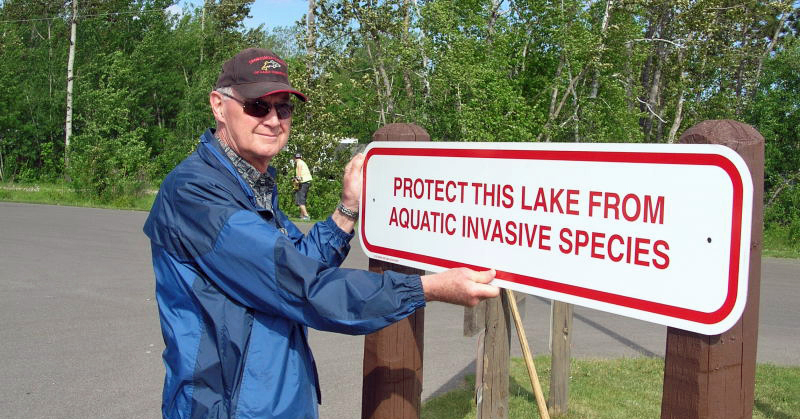
AIS Prevention at Vermilion … How It Began
When I joined the board of the Sportsmen’s Club of Lake Vermilion in 2003 as their treasurer, I could see some dark clouds on the horizon which were not related to dollars and cents. Duane Williams and Jack Sparks had discovered rusty crayfish in Armstrong Bay in the mid-1980s. Interesting, but the significance of rusty crayfish multiplying at a rather rapid rate was not clear at the time. They especially liked weedy bays. Back in those days, they were called “exotics” or “exotic species” and didn’t get much attention.
The attention had grown a bit by 1992, when three Lake Vermilion representatives – Dale Lundblad, Jack Sparks and Mark Ludlow – attended a scientific conference in Brainerd entitled “Exotics in Minnesota: The Inland Invasion.” The message was now clear.
After the conference, we published an article in our May 1992 newsletter called “Exotic Plants and Animals – Do they Threaten Lake Vermilion?” Member education was our first step. See excerpts from that early newsletter article in our Summer Newsletter.
In addition to education, our organization got our members involved. Willis Irons worked with property owners to hang zebra mussel samplers made from PVC pipe off the end of their docks. Fortunately, no zebras were detected.
By the early 2000s, the term “exotics” was replaced by “invasives” and soon “aquatic invasive species.” I began organizing volunteer boat inspections on holiday weekends at our busiest public accesses – Hoodoo Point and Moccasin Point in particular. We were plowing new ground and were pleased with the cooperation we received from boaters.
Soon, we were inspecting boats at a dozen accesses across Vermilion with over 50 volunteers. Within a few years, we had inspected our 1000th boat. Pretty good for a great bunch of volunteers! Most of them were very willing to help with boat checks on busy weekends. We had a few training sessions run by the DNR, with a good box lunch prepared by Nancy Yapel. Our attendance, not surprisingly, was quite good.
By 2010, we had added other education efforts. Judy Moline designed an AIS placemat for restaurants after Frank Siskar found an example at a different lake, I believe, in North Dakota. Other efforts were having AIS signs on billboards. That was a challenge in that the location of the billboard was seldom optimal. With the DNR’s help, we had fish rulers made. AIS ID cards were distributed. The Ron Gardenhire radio PSA was especially popular during Twins Games. About once a year, my counterpart in Ely and I would be interviewed on the air at an Ely radio station. Perhaps we were able to reach people that new little about AIS.
In 2015, we witnessed the fishery problems at Lake Mille Lacs. As a group, we vowed to do everything possible to prevent the same type of devastation at Vermilion. About that time, St Louis County made AIS prevention funding available to organizations like ours. Our AIS prevention program took another leap forward.
Today, after my retirement, Vermilion Lake Association board member Jeff Lovgren leads our AIS work. With serious AIS threats all around us, the scope of today’s program dwarfs that from 20 years ago. The program includes partners North St Louis Soil and Water Conservation District, the Burntside Lake Association, Pelican Lake, and Fayal Township. It’s a model for other lakes and counties to copy. The boat checks we started at Vermilion over a decade ago are still a very important component of AIS prevention.
Read eVermilion